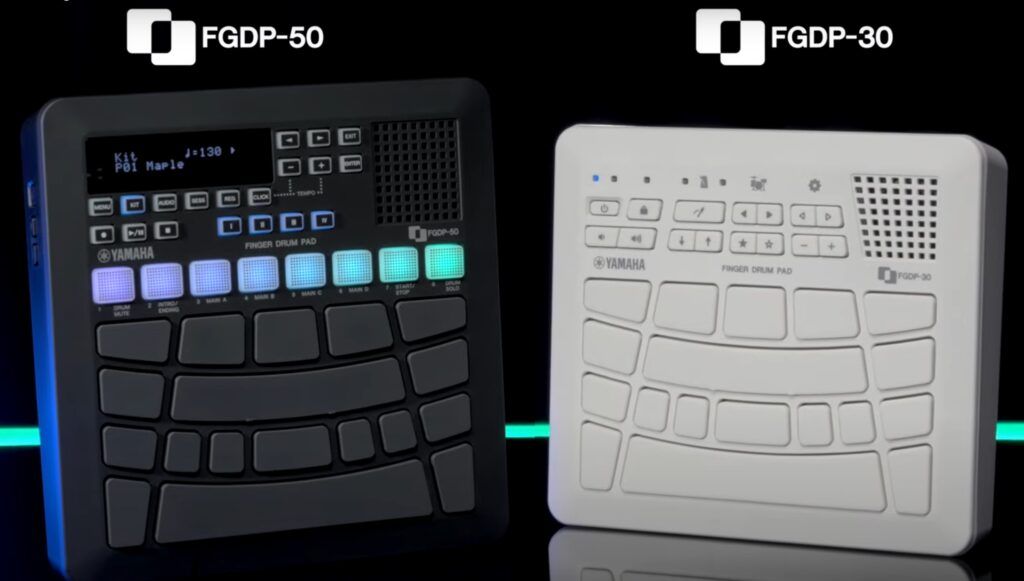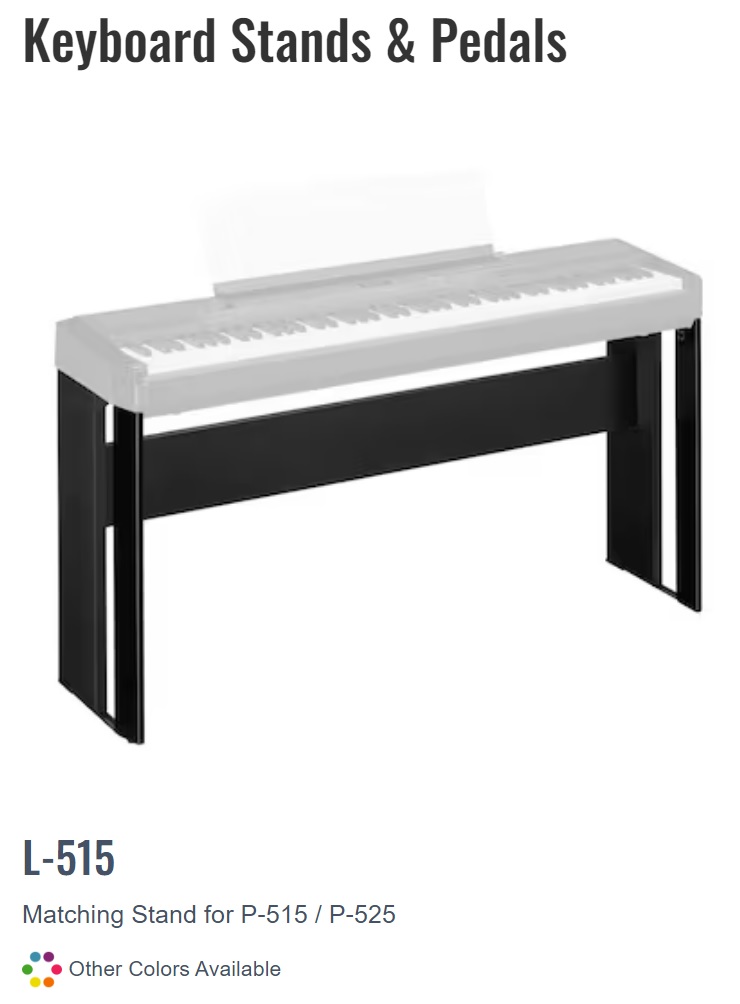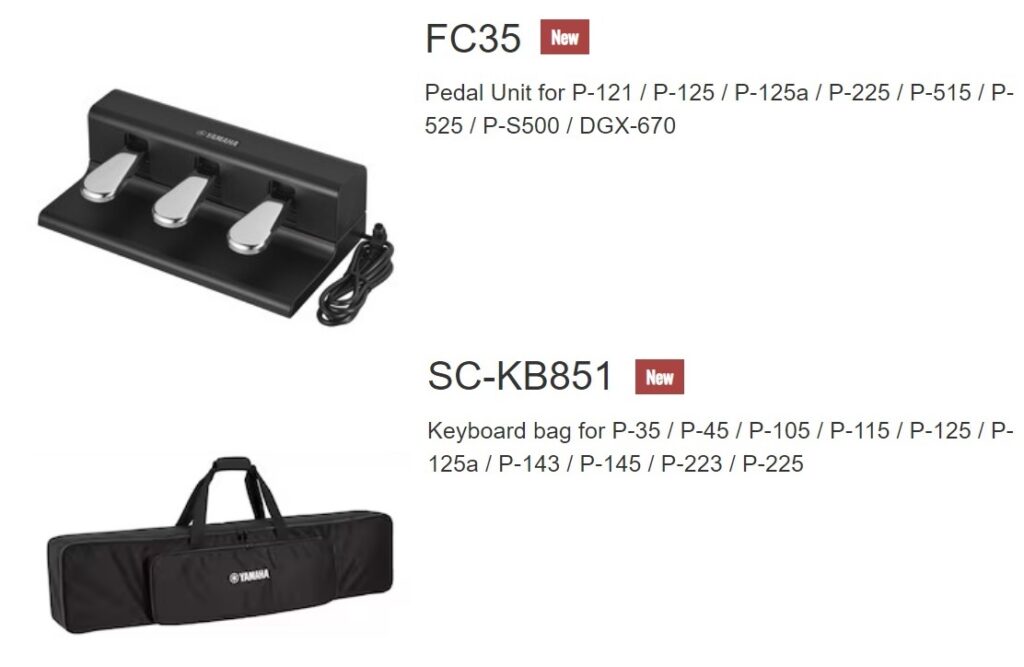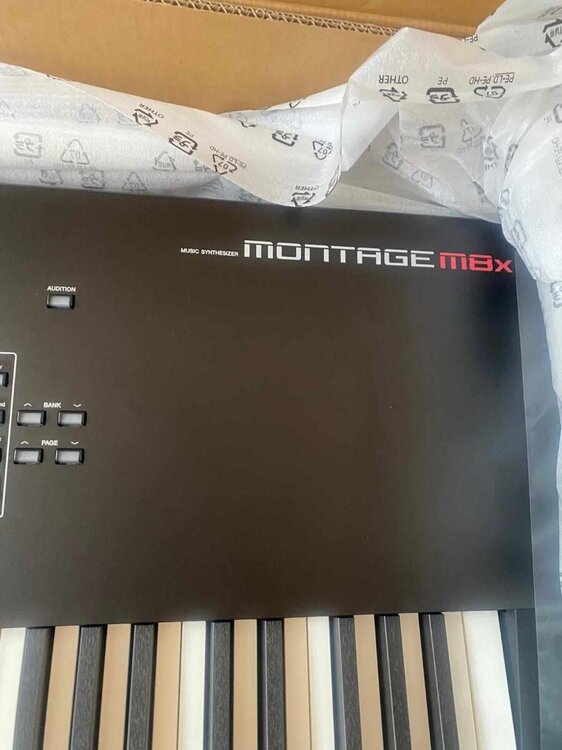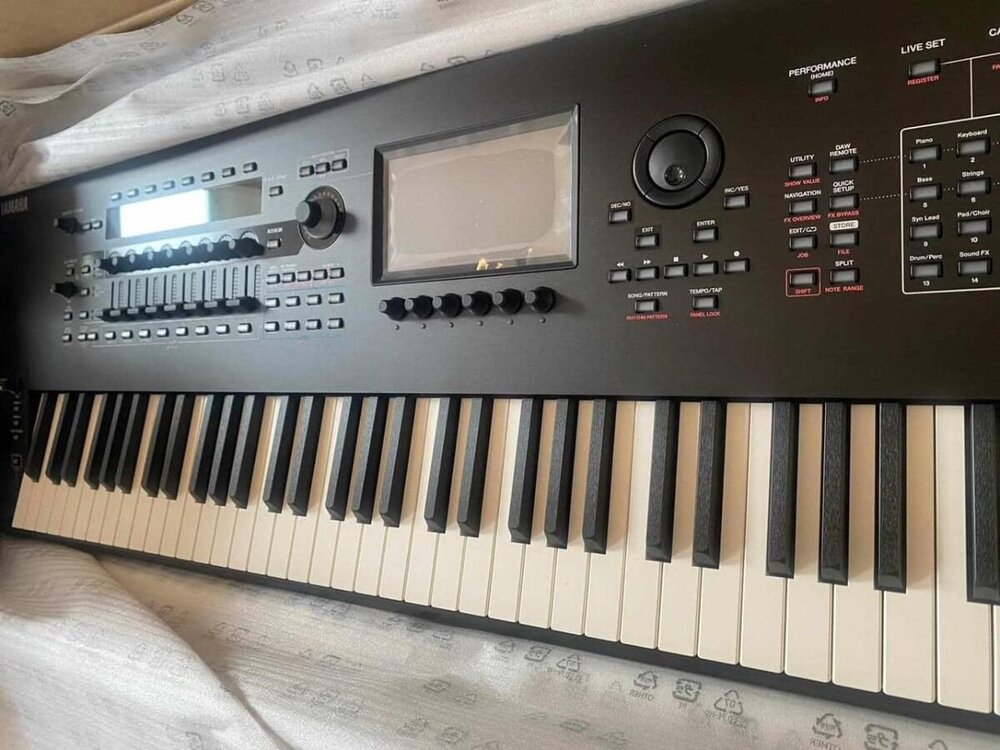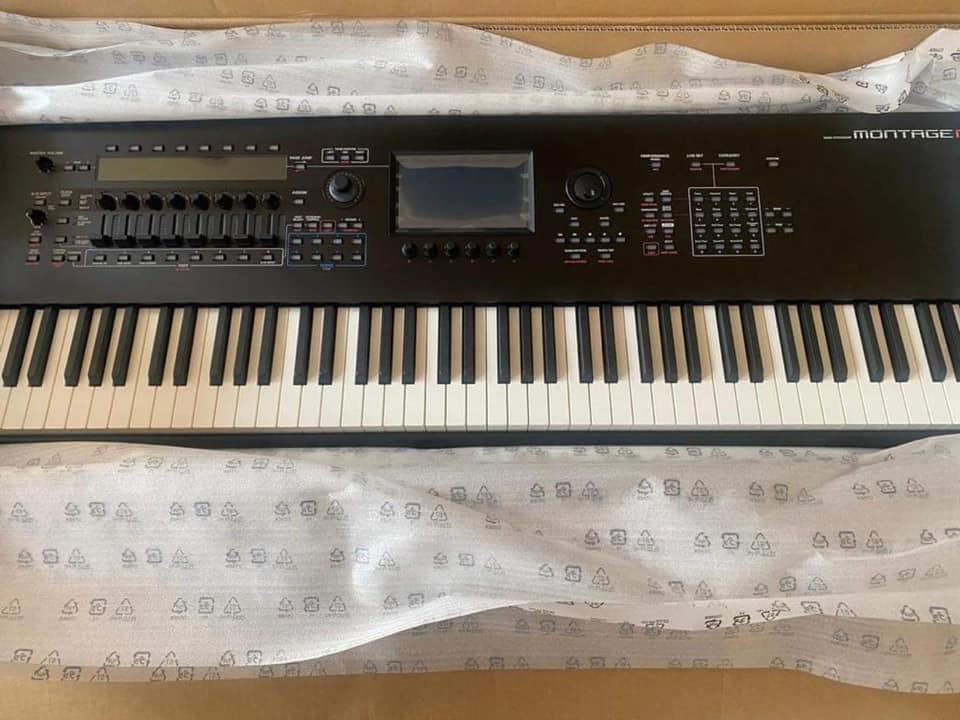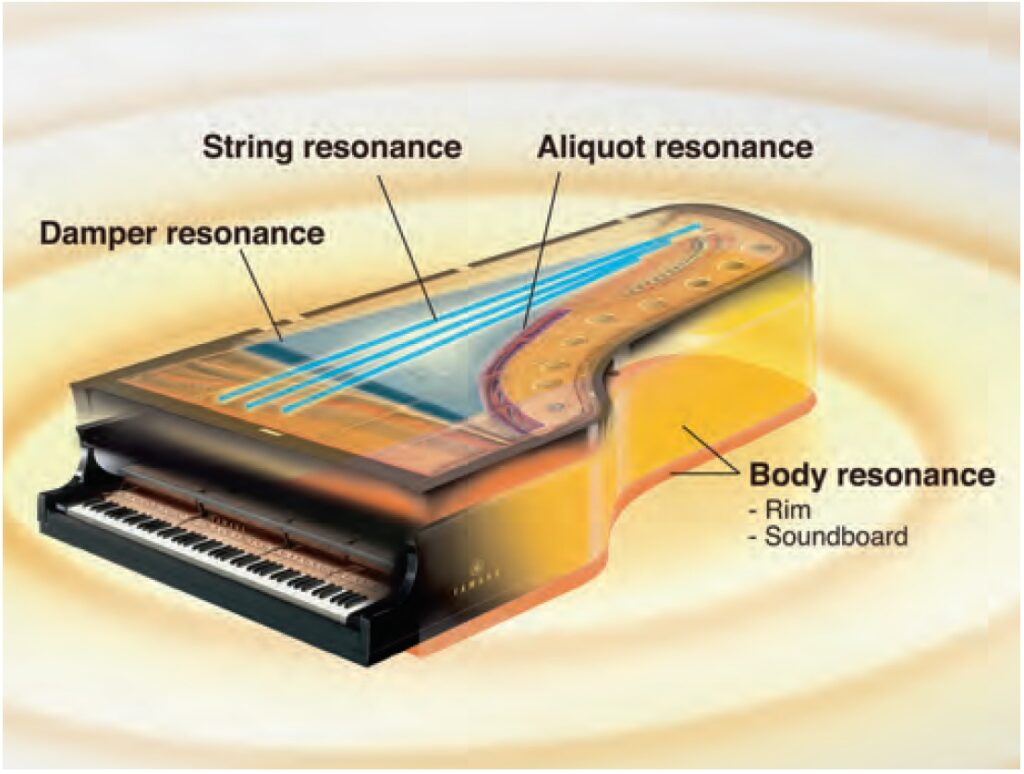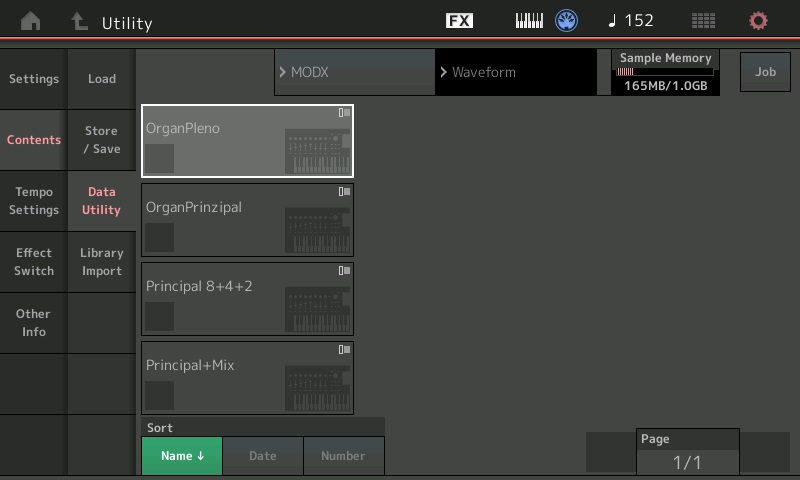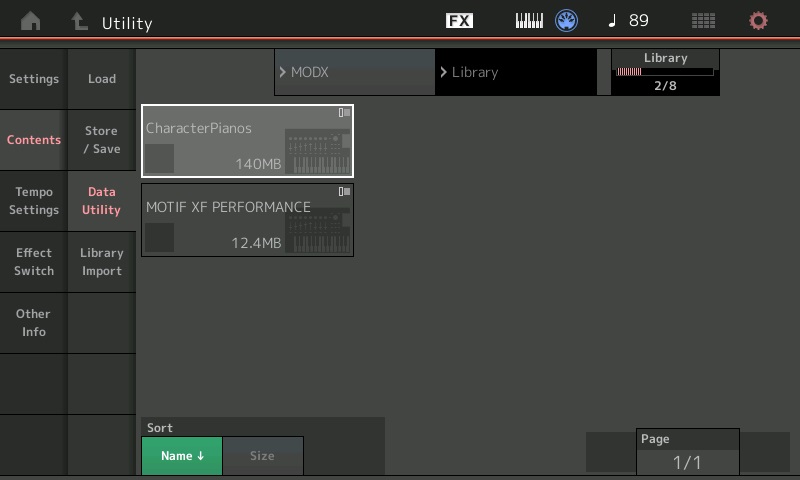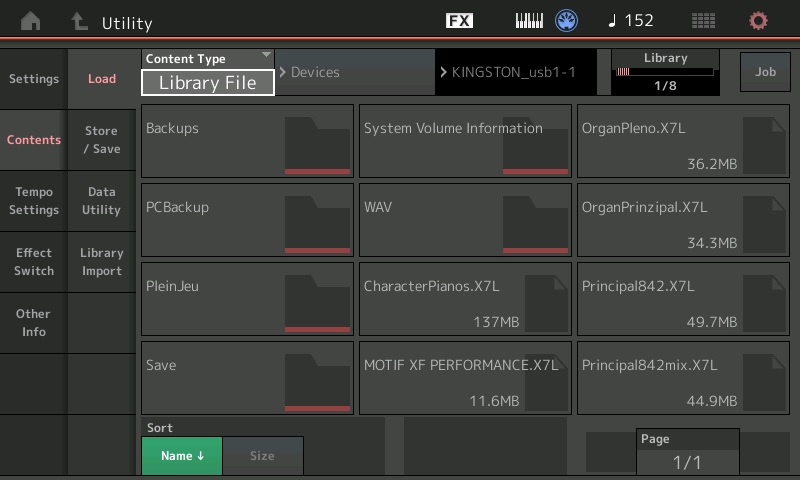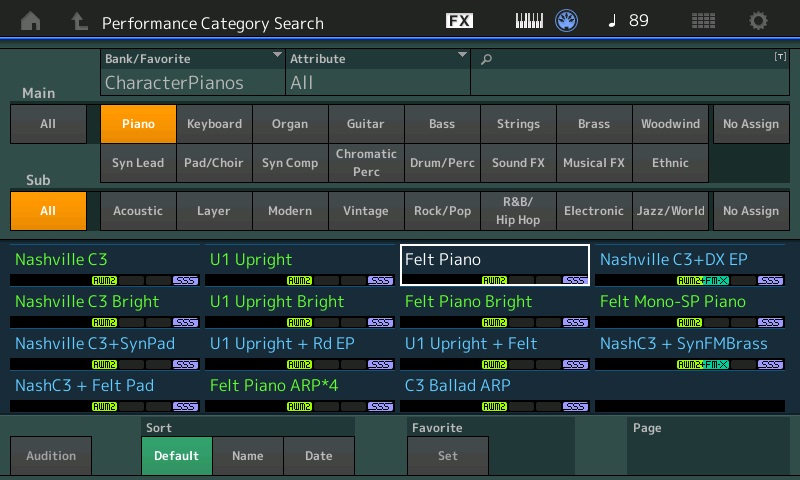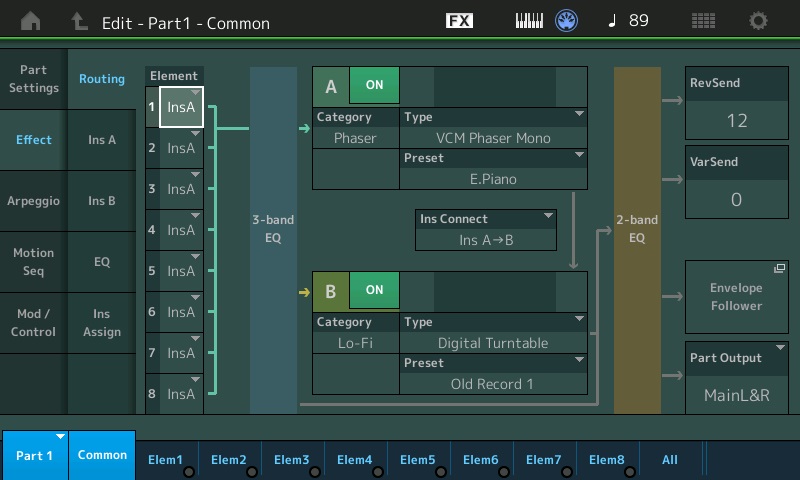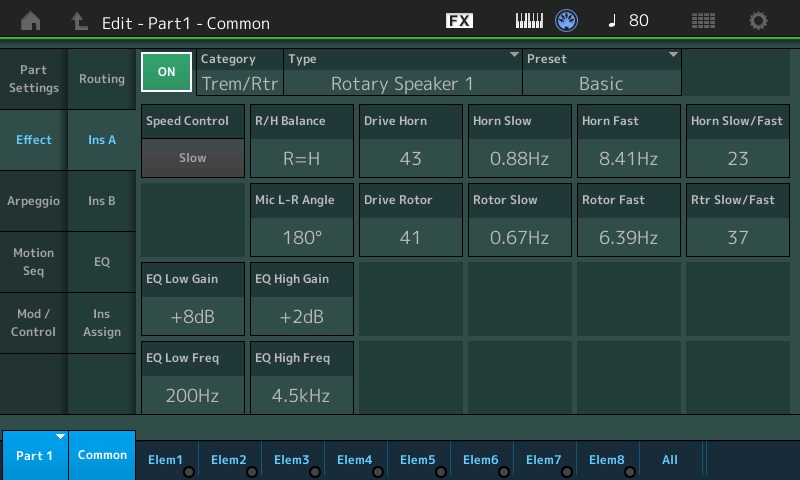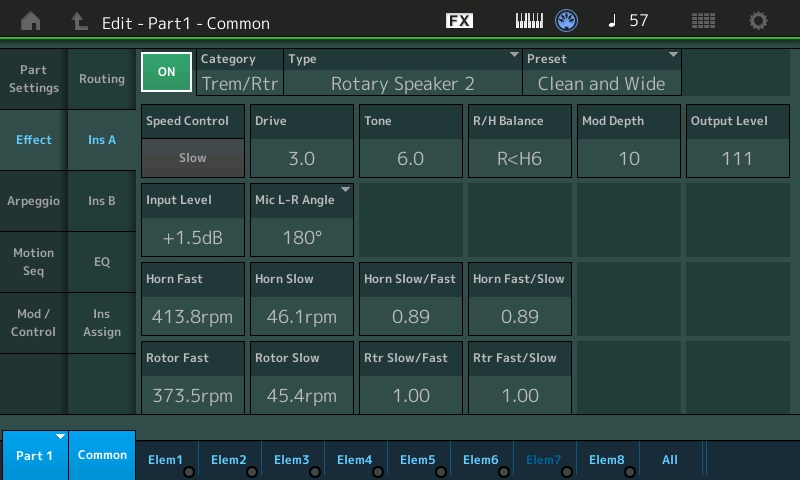One phrase from the Sayonara Montage announcement sticks in my mind: “As much as we would have liked to, we cannot develop the current MONTAGE any further.”
So, how might the current Montage platform be improved?
SWP70 Standard Wave Processor
The current Montage platform has two SWP70 Standard Wave Processors arranged in a so-called — and somewhat offensively named — master/slave configuration. This tandem has been the mainstay of top-end Yamaha synth and arranger keyboards since the early days of Advanced Wave Memory (AWM). The pair are interconnected by a dedicated, addressable 16-bit data bus (ABUS).
The SWP70 is highly tailored for AWM2 and FM-X synthesis. The tone generation channels are dedicated hardware feeding an internal mixing/effects complex. Digital audio is conveyed on- and off-chip via I2S format serial audio streams. The SWP70 can support up to eight input and eight output I2S streams.
I doubt if this microarchitecture will change much. It seems to be entrenched in the Yamaha engineering DNA. There are two possibilities for improvement.
First, the current Master SWP70 uses only one of its two available WAVE SDRAM memory channels. The WAVE SDRAM is where the SWP70 caches samples fetched from ONFI 4.0 NAND flash waveform memory. The Master SWP70 handles AWM2 synthesis alone. (The second SWP70 handles FM-X synthesis and does not have any wave-related memory.) The unused WAVE SRAM channel is marked “Not Installed” and “For Future Model”. Most likely, the second channel would be used to increase the polyphony spec.
Next, Yamaha could re-spin the SWP70, perhaps producing an SWP71 variant. There is precedent for a re-spin. The Motif ES is based on the SWP50 and its successor, the Motif XS, is based on the SWP51. What Yamaha adds to silicon is anybody’s guess. 😉
ARM host processor
The current Montage host processor runs Linux and has many duties — none of which perform synthesis. The host processor is a Texas Instruments AM3352BZCZ80 processor operating at 800MHz.
The AM3352 Texas Instruments Sitara processor has a spec which is nearly quaint by today’s standards:
- ARM Cortex-A8 32-bit RISC processor
- Single core
- NEON SIMD coprocessor
- 13-stage superscalar pipeline
- PowerVR SGX Graphics Accelerator
The modest 800MHz clock lets Yamaha hit the desired power/heat operating point, thereby avoiding active cooling.
The key limitation that catches my eye is “single core”. This means that only one computational thread can run at any given time. Yamaha engineers must positively envy Korg’s use of Raspberry Pi 3 (Broadcom BCM2837):
- Quad-core ARM Cortex-A53 (ARM V8 ISA)
- 2 wide issue, in-order pipelines
- 1.2GHz clock
With RPi3, one gives up superscalar for simpler in-order pipelines, but you do get to run four threads simultaneously.
I’m sure Yamaha engineers have studied newer, available embedded ARM processors for Montage M. Does the “M” stand for multi-core?
Guesses, anyone?
If Montage M goes multi-core, this opens the possibility of software instruments (and effects) running on one or more of the host processor cores. Current Yamaha synths allow expansion through sample libraries only, while competitors support the addition of new engines. Kind of ironic considering that its captive Steinberg developed VST plug-ins in 1996.
Even the lowly Korg NTS-1 supports the development and addition of new oscillator and effect models through the logue SDK (API) and librarian.
So, readers of Yamaha Musicians Forum, does the prospect of software plug-ins get Saul’s pulse racing, again? 🙂
The new choice for host processor and its embedded display controller may also give Montage M a new multi-touch display. Could “M” also stand for “multi-touch”. Using the Montage touch screen as an X-Y pad always seemed like a no-brainer… Then there are new possibilities for multi-touch articulation.
It’s worth noting that the new Montage M platform may leave MODX+ in the dust. I don’t expect much functional trickle-down from Montage M to MODX+. The MODX+ platform is riding the profit-pumping, low-cost technology curve and won’t be able to keep up with its jacked brother.
Copyright © 2023 Paul J. Drongowski

